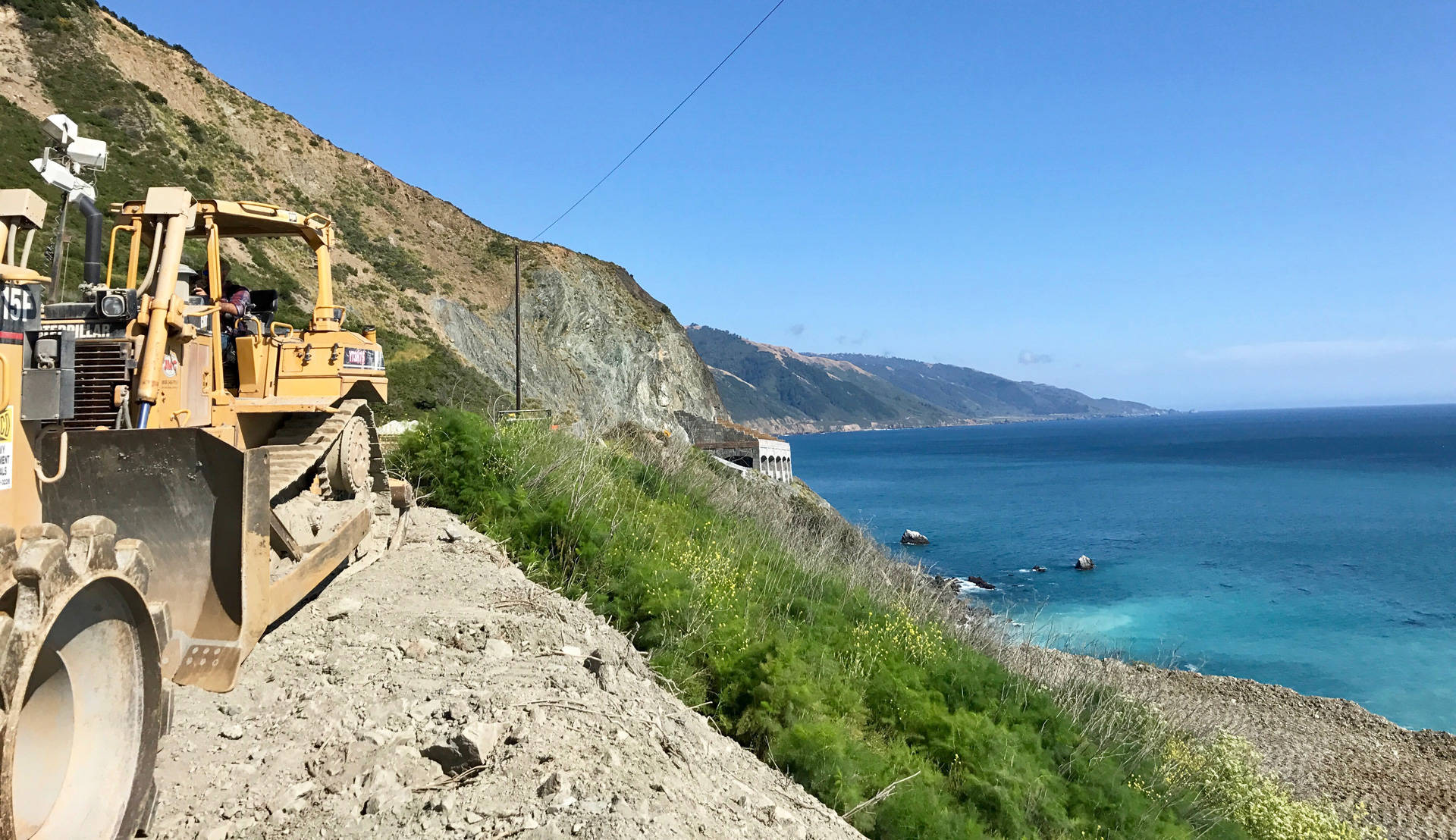When you really delve into the chronology of Big Sur slides and road closures, you find out that Highway 1 goes through periods where it’s subject to nearly constant blockages because of moving earth and falling rocks. Most of these episodes don’t come to the attention of the outside world. Caltrans responds quickly and closures typically last less than a day.
Several of this year’s closures, however, are of the marathon variety:
- One was caused by the February failure of a bridge near the village of Big Sur, just north of Pfeiffer Big Sur State Park. Caltrans says a new bridge will be in place by the end of September.
- An area called Paul’s Slide, about 25 south of the village of Big Sur, has been subject to on-and-off closures — including several total shutdowns — since December. Caltrans has said the area could be restored to “normal” traffic by the end of July.
- And finally, another 13 miles down the road from Paul’s Slide is Mud Creek, just south of the community of Gorda. Highway 1 was buried there by a mountainside that had begun moving in December and finally collapsed on May 20. There’s no estimate on when the road will be restored there, though local speculation has it that it will take a year or more.
The closures have disrupted life all through Big Sur, forcing tourist-oriented businesses like resorts, inns and restaurants to lay off employees and making it tough for residents to reach the outside world.
Along the 35-mile stretch of Highway 1 between the village of Big Sur and Mud Creek, the only way to drive in or out is over Nacimiento-Fergusson Road. That’s a steep, narrow, twisting byway — now frequented by more than its share of inexperienced mountain drivers and big trucks in construction convoys — that crosses the Santa Lucia range and connects with other rural roads that connect to U.S. 101 in the Salinas Valley.
Just last week, Novoa said Friday, she had to take her sick dog to a veterinarian in Morro Bay — a trip that’s now roughly double its normal 60-mile one-way distance. The drive took four hours each way. A recent shopping trip to San Luis Obispo — usually about 150 miles round trip — turned into a 250-mile drive and consumed 12 hours.
“After doing that, we decided we can’t go that far a distance without doing an overnight,” Novoa said. “So now we’re planning everything around convoys, staying overnight. … Tuesday, we have to go to Paso Robles for an appointment to get some vehicle work done. So we’ll be spending the night in Paso Robles for a 9 o’clock appointment.”

